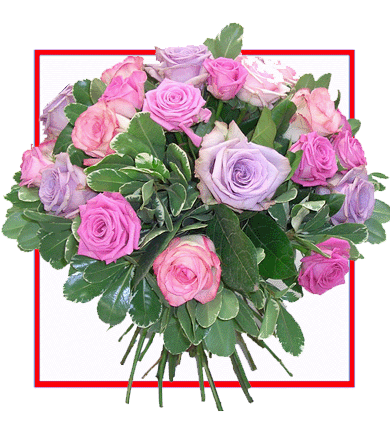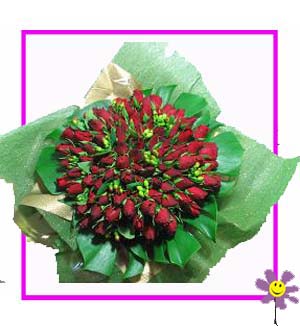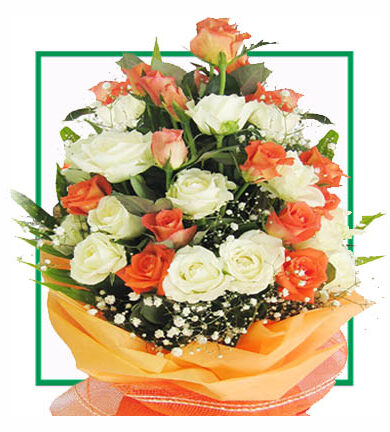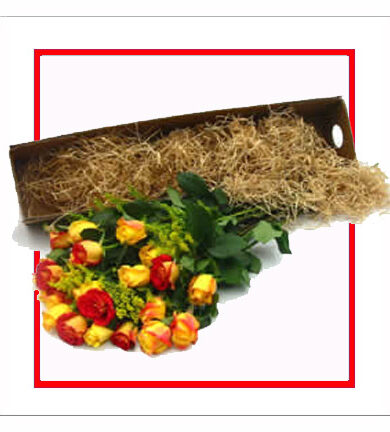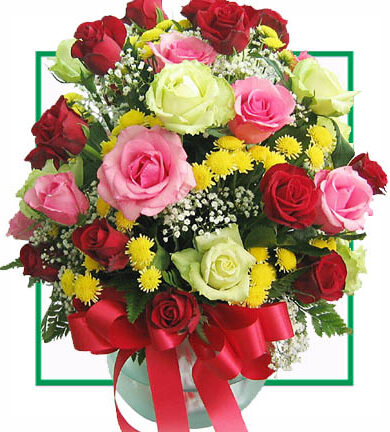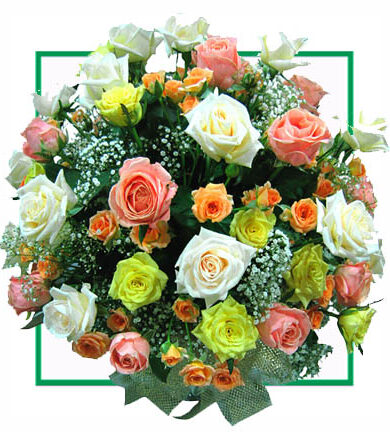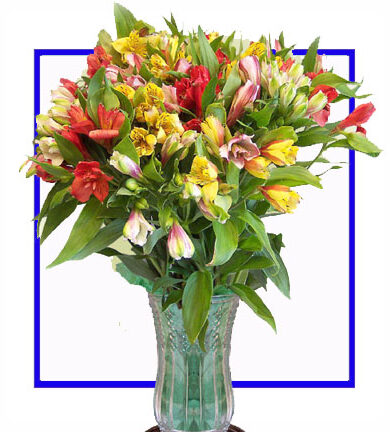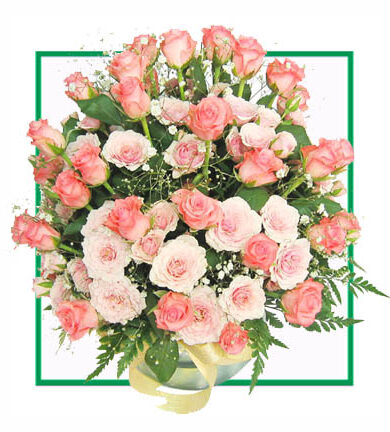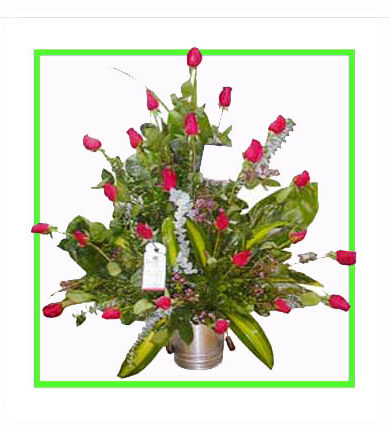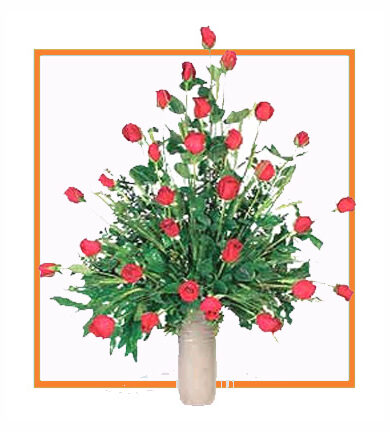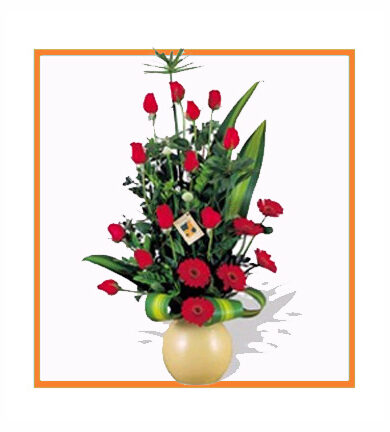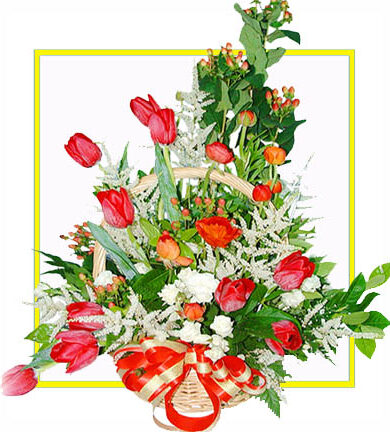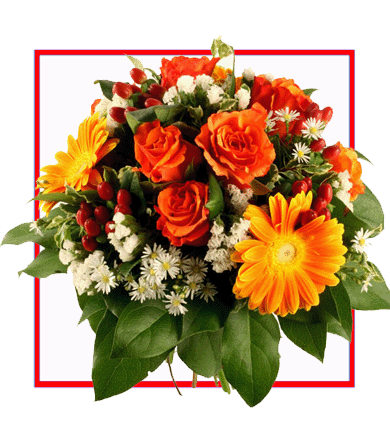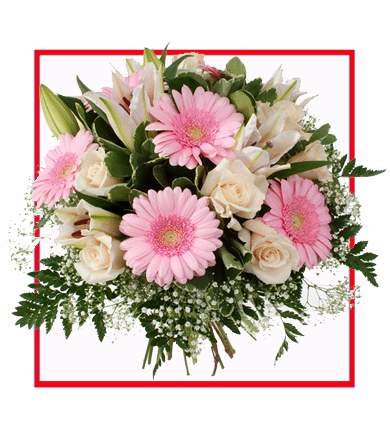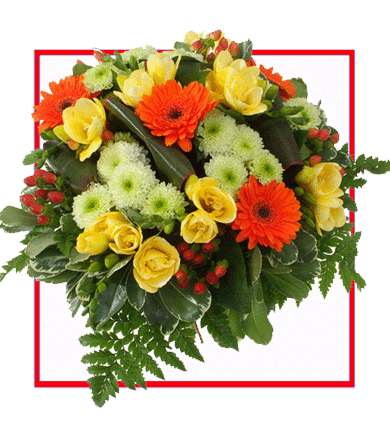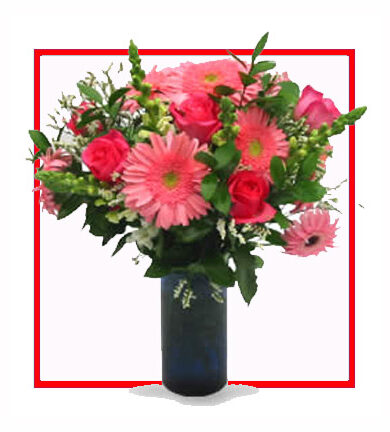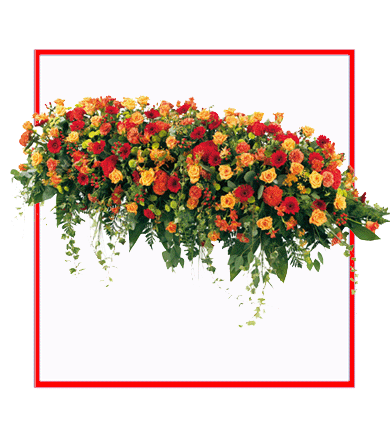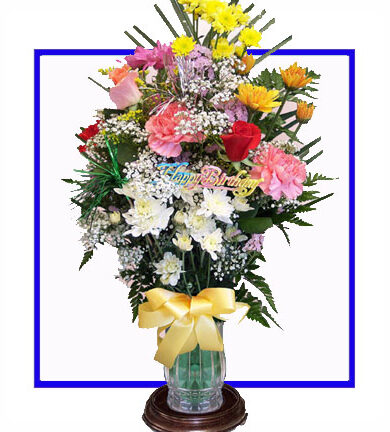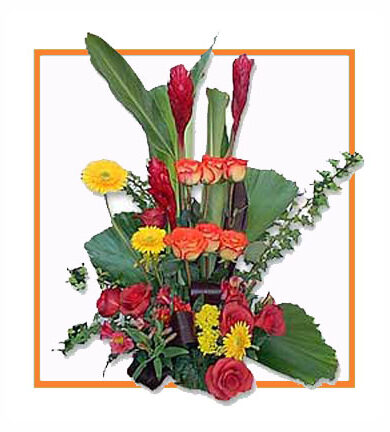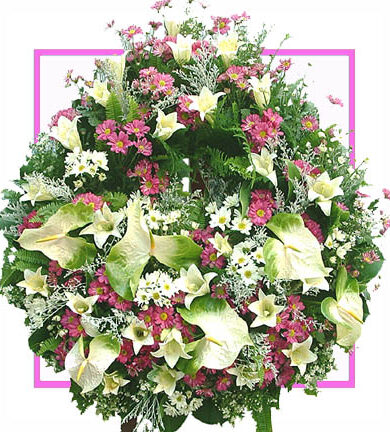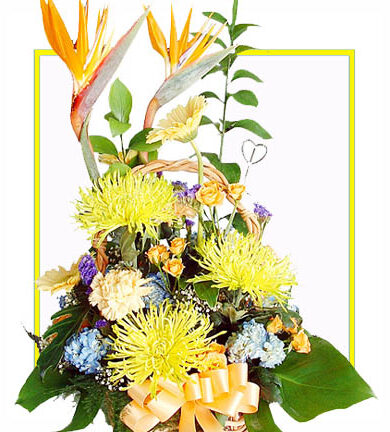Madras Book Fair, an annual book fair organized in Madras by the Booksellers and Publishers Association of South India (BAPASI), is the largest exhibition for Tamil book publishers to display their books. The fair is typically held for about 10 days between the last week of December and the third week of January. Thirty-fifth edition of the fair was held on 2012. |
Madras city is governed by the Madras Corporation (formerly “Corporation of Madras”), which was established in 1688. It is the oldest municipal corporation in India and the second oldest corporation in the world. In 2011, the jurisdiction of the Madras Corporation was expanded from 174 km2 (67 sq mi) to an area of 426 km2 (164 sq mi), dividing into three regions—North, South and Central, which covers 200 wards. The corporation is headed by an Indian Administrative Service officer. The Mayor and councillors of the city are elected through a popular vote by the residents. While the city limit was expanded to 426 km2 in 2011, the revised population is yet to be officially announced. |
Madras has a tropical wet and dry climate. The city lies on the thermal equator and is also on the coast, which prevents extreme variation in seasonal temperature. The weather is hot and humid for most of the year. The hottest part of the year is late May to early June, known regionally as Agni Nakshatram (“fire star”) or as Kathiri Veyyil, with maximum temperatures around 35–40 °C (95–104 °F). The coolest part of the year is January, with minimum temperatures around 15–22 °C (59–72 °F). The lowest temperature recorded is 13.8 °C (56.8 °F) and the highest recorded temperature is 45 °C (113 °F) The average annual rainfall is about 140 cm (55 in). The city gets most of its seasonal rainfall from the north–east monsoon winds, from mid–October to mid–December. Cyclones in the Bay of Bengal sometimes hit the city. The highest annual rainfall recorded is 257 cm (101 in) in 2005. Prevailing winds in Madras are usually southwesterly between April and October and northeasterly during the rest of the year. Historically, Madras has relied on annual monsoon rains to replenish water reservoirs, as no major rivers flow through the area. Madras has a water table at 2 metres for 60 percent of the year. |
Madras has world-class medical facilities, including both government-run and private hospitals. The government-aided hospitals include General Hospital, Adyar Cancer Institute, TB Sanatorium, and National Institute of Siddha. The National Institute of Siddha is one of the seven apex national-level educational institutions that promote excellence in Indian system of medicine and Ayurveda. Some of the popular private-run hospitals in Madras are Apollo Hospitals, Chettinad Health City, MIOT Hospitals and Vasan Healthcare. The prime NABH-accredited hospitals includes Madras Apollo Speciality Hospital, Dr Mehta Hospitals, Frontier Lifeline Hospital, Global Hospitals & Health City, Sankara Nethralaya, and Vijaya Medical & Educational Trust. Madras attracts about 45 percent of health tourists from abroad and 30 percent to 40 percent of domestic health tourists. The city has been termed India’s health capital. |
Madras hosts the headquarters of the Southern Railway. The city has two main railway terminals. Madras Central station, the city’s largest, provides access to other major cities as well as many other smaller towns across India, whereas Madras Egmore provides access to destinations primarily within Tamil Nadu; however, it also handles a few inter–state trains. The Madras suburban railway network, one of the oldest in the country, facilitates transportation withinn the city. It consists of four broad gauge sectors terminating at two locations in the city, namely Madras Central and Madras Beach. While three sectors are operated on-grade, the fourth sector is majorly an elevated corridor, which links Madras Beach to Velachery and is interlinked with the remaining rail network. Construction is underway for an underground and elevated Rapid Transit System locally known as Madras Metro Rail. There is also a proposal to construct a monorail network to augment the existing public transportation system in the city. |
Madras houses several theme parks, namely MGM Dizzee World and Queens Land. The safety of several amusement parks has been questioned after several fatal accidents occurred. |
Madras i/t??’na?/ (unofficially known by its former name, Madras i/m?’dr??s/) is the capital city of the Indian state of Tamil Nadu. Located on the Coromandel Coast off the Bay of Bengal, it is a major commercial, cultural, economic and educational center in South India. It is also known as the “Cultural Capital of South India” and was declared as the most liveable city in India by the Institute of Competitiveness on account of economic, social, security and medical conditions as parameters. |
Madras is a major centre for music, art and culture in India. The city is known for its classical dance shows. In 1930, for the first time in India, Madras University introduced a course of music, as part of the Bachelor of Arts curriculum. The Madras Music Season, initiated by Madras Music Academy in 1927, is celebrated every year during the month of December. It features performances of traditional Carnatic music by many artists in and around the city. An arts festival called the Madras Sangamam, which showcases not only various arts of Tamil Nadu but also from the neighbouring states, like kalari (from Kerala), which is a major attraction, is held in January every year. The Speciality of Madras Sangamam is that the various programs are held near or at the various famous landmarks in the city so that everyone in the city has access to the programs and there is no fee charged for entry for any of the programs. Madras is also known for Bharata Natyam, a classical dance form that originated in Tamil Nadu and is the oldest dance form of India. An important cultural centre for Bharata Natyam is Kalakshetra, on the beach in the south of the city. In 2012, a group of five Bharatha Natyam dancers from Madras performed at the India Campaign during the 2012 Summer Olympics. Madras is also home to some choirs, who during the Christmas season stage various carol performances across the city in Tamil and English. |
Madras is also the birthplace of several regional political movements since the British era. South Indian Welfare Association, one of the earliest regional parties, was founded in 1916, which later came to be known as the Justice Party, which was the main opposition party to the Indian National Congress in the state. In 1944, the party was renamed Dravidar Kazhagam (DK) by E. V. Ramasami (popularly known as ‘Periyar’). The party was a non-political party that demanded the establishment of an independent state called Dravida Nadu. However, due to the differences between its two leaders Periyar and C. N. Annadurai, the party was split. Annadurai left the party to form the Dravida Munnetra Kazhagam (DMK). The DMK decided to enter into politics in 1956. |
Madras is classified as being in Seismic Zone III, indicating a moderate risk of damage from earthquakes. Owing to the geotectonic zone the city falls in, the city is considered a potential geothermal energy site. The crust has granite rocks indicating volcanic activities in the past. It is expected that a temperatures of around 200-300°C will be available if the ground were drilled 4 to 5 km deep. The region has the oldest rocks in the country dating back to nearly a 1,000,000,000 (number) years. |
Madras is home to many museums, galleries, and other institutions, many of which are free of admission charges and are major tourist attractions as well as playing a research role. The city is also an host to the oldest Museum and Art Gallery in the country- Government Museum, Madras and The National Art Gallery (Madras), established in the early 18th century. |
Madras is home to several malls, due to its status as an IT hub. Madras houses quite a few big malls namely EA, Citi Centre, Spencer Plaza, Ampa Skywalk. Phoenix Market City which was opened in January 2013 at Velachery is one of India’s Biggest shopping Malls. Madras houses a lot of cinema screens in the form of multiplexes. Few of the famous multiplexes are Sathyam Cinemas, Escape, Devi and Abirami complex. Tamil, English, Hindi, and Telugu movies are released and have a large number of fan following. With the increase in malls, the multiplexes have also doubled recently. Madras encourages its Theatre artist’s equally. The city is under a thick of activity across the year with a number of plays staged in Tamil and English, as well as with Koothu Patrai, a form of street play in unison with songs and dance. |
Madras is home to the first European-style banking system in India with the establishment of the ‘Madras Bank’ on 21 June 1683, almost a century before the establishment of the first commercial banks, such as the Bank of Hindustan and the General Bank of India, which were established in 1770 and 1786, respectively. However, the bank proved a failure. Upon the recommendation of the British Finance Committee on the formation of a government bank, the Madras Bank, then known as the ‘Government Bank’, started functioning again from 1806. In 1843, the bank merged with the Carnatic Bank (1788), the British Bank of Madras (1795) and the Asiatic Bank (1804) and became the Bank of Madras, which was one of the three Presidency banks of India, the other two being the Bank of Bengal and the Bank of Bombay. In 1921, the three Presidency banks merged to form the Imperial Bank of India, which later became the State Bank of India in 1955. |
Madras is in second place for literacy among metropolitan city centers in India with a 90.33 percent literacy rate. Madras has a mix of public and private (some of which also receive financial support from the government) schools. The public school system is managed by the Madras Corporation with an enrollment of 142,387 students in over 330 schools. Tamil and English are the primary media of instruction, though several schools also use Telegu or Urdu. Public schools run by the Madras Corporation are all affiliated with the Tamil Nadu State Board, while private schools may be affiliated with either of the Tamil Nadu Board of Secondary Education or the Central Board of Secondary Education (CBSE). A few schools are affiliated with the Council for the Indian School Certificate Examinations, the National Institute of Open Schooling (NIOS) board or the Montessori system. Education in Madras starts with two years of Kindergarten from age three onward and then follows the Indian 10+2+3 plan, ten years of school, two years of higher secondary education, and three years of undergraduate education. |
Madras is one of the cities in India that is connected by the Golden Quadrilateral system of National Highways. It is connected to other Indian cities by four major National Highways (NH) that originate in the city. They are NH 4 to Mumbai (via Bangalore, Pune), NH 5 to Kolkata (via Visakhapatnam, Bhubaneswar), NH 45 to Theni (via Villupuram, Tiruchirapalli, Dindukal) and NH 205 to Anantapur, Andhra Pradesh (via Tirupati). Madras is connected to other parts of the state and the Union Territory of Puducherry by state highways. |
Madras is one of the few cities in the world that accommodates a national park, the Guindy National Park, within its limits. The city has an estimated 4.5 percent of its area under green cover. This enables Madras residents to go birding in Madras. The seven zones of the old corporation limits has about 260 parks, many of which suffer poor maintenance. The city has a per capita park space of 0.41 sq m, which is the least among all metros in India. The eight zones in the newly added areas of the city have about 265 locations that have been identified for development of new parks. The largest among the parks is the 358-acre Tholkappia Poonga, developed to restore the fragile ecosystem of the Adyar estuary. The horticulture department-owned Semmozhi Poonga is an 20-acre botanical garden located in the downtown. |
Madras is one of the four cities in India through which the country is connected with the rest of the world through undersea fiber-optic cables, the other three being Mumbai, Kochi, and Tuticorin. The city is the landing point of major submarine telecommunication cable networks such as SMW4 (connecting India with Western Europe, Middle East and Southeast Asia), i2i (connecting India with Singapore), TIC (connecting India with Singapore), and BRICS (connecting India with Russia, China, South Africa, Brazil and the United States). The 3,175-km-long, 8-fiber-paired i2i has the world’s largest design capacity of 8.4 terabits per second. |
Madras is the base for the Tamil film industry, known as Kollywood. Many film personalities have gone on to become Chief Ministers of the State. M.G. Ramachandran and J. Jayalalitha are prime examples of actors turned administrators. M.Karunanidhi is another chief minister turned politician who has close links with the cinema industry. All mentioned above have contributed to the spread of Tamil cinema and language in India. Madras hosts major film studios, including AVM studios, so on. AVM studio is the oldest surviving studio in India. As of 2012, there are 120 cinema screens in Madras. Madras’s theatres stage many Tamil plays; political satire, slapstick comedy, history, mythology and drama are among the popular genres. English plays are popular in the city. |
Madras is the headquarters of the Indian Bank, the Indian Overseas Bank, and the erstwhile Bharat Overseas Bank, which merged with the Indian Overseas Bank in 2007. The city is home to the south zonal office of the Reserve Bank of India, the country’s central bank, along with its zonal training centre and Reserve Bank Staff College, one of the two colleges of the bank. The city also houses the permanent back office of the World Bank, which is one of the largest buildings owned by the bank outside its headquarters in Washington, DC. The Madras office handles corporate financial, accounting, administrative and IT services of the bank, in addition to several value-added operations of the bank that were earlier handled only in its Washington, DC office, including the bank’s analytical work in bond valuation which is estimated to be US$100 billion. |
Madras is the most important gold market in the southern region of India which contributes to 45 percent of the 800-tonne annual national gold offtake. Madras’s retail industry is concentrated chiefly in T. Nagar, which accounts for about 70 to 80 percent of the gold sold in Madras. According to the 2012 report by property consultant Cushman & Wakefield, Main Streets Across the World, Khader Nawaz Khan Road at Nungambakkam ranked 10th position in the list of ‘Top 10 Global Highest Retail Rental Growth Markets 2012’, with 36.7 percent jump in rents. |
Madras serves as a major gateway to southern India. Madras International Airport, comprising the Anna international terminal and the Kamaraj domestic terminal with a total passenger movements of 12.9 million and aircraft movements of 120,127 in 2011–2012, is the third busiest airport and the second busiest cargo terminus in India. Madras handles 316 flights a day, again making it at third spot among Indian Airports. The city is connected to major hubs across Asia, Europe, and North America through more than 30 national and international carriers. |
Madras was the venue of the 1995 South Asian Games. Madras is home to a World Series Hockey (WSH) team, the Madras Cheetahs. The Mayor Radhakrishnan Stadium is associated with hockey and was venue for the international hockey tournament the 2005 Men’s Champions Trophy and the 2007 Men’s Asia Cup. The Jawaharlal Nehru Stadium is associated for hosting Football and athletic competitions, it also houses a multi–purpose indoor complex for competition in volleyball, basketball and table tennis. Water sports are played in the Velachery Aquatic Complex. Tennis sport is popularising among the city youths, Since 1997 Madras has been host to the only ATP World Tour event held in India, the Madras Open. Vijay Amritraj, Ramesh Krishnan and Somdev Devvarman are tennis players from Madras. |
Madras, along with Mumbai and Delhi and Kolkata, is one of a few Indian cities which is home to a diverse population of ethno-religious communities. Minorities include Marwaris, Parsis, Sindhis, Oriyas, Goans, Kannadigas, Anglo-Indians, Bengalis, Punjabi, and Malayalees. According to the 2001 census, Hindus constitute about 81.3% of the city’s population, and Muslims (9.4%), Christians (7.6%) and Jains (1.1%) are other major religious groups. |
Madras, as the capital of the state of Tamil Nadu, houses the state executive and legislative headquarters primarily in the Secretariat Buildings in the Fort St George campus. The Madras High Court, is the highest judicial authority in the state, whose jurisdiction extends across Tamil Nadu and Puducherry. Madras has three parliamentary constituencies—Madras North, Madras Central and Madras South—and elects 14 Members of the Legislative Assembly (MLAs) to the state legislature. |
Madras, sometimes referred to as the “Gateway to South India,” is located on the south–eastern coast of India in the north–eastern part of Tamil Nadu on a flat coastal plain known as the Eastern Coastal Plains. Its average elevation is around 6.7 metres (22 ft), and its highest point is 60 m (200 ft). Two major rivers meander through Madras, the Cooum River (or Koovam) through the centre and the Adyar River to the south. Cooum is one of the most polluted rivers in the whole South of India and serves as potential health hazard to the people living in and around the river. A third river, the Kortalaiyar, flows through the northern fringes of the city before draining into the Bay of Bengal, at Ennore. The estuary of this river is heavily polluted with effluents released by the industries in the region. Adyar and Cooum rivers are heavily polluted with effluents and waste from domestic and commercial sources. The state government periodically removes silt and pollutants from the Adyar river, which is less polluted than the Cooum. A protected estuary on the Adyar forms a natural habitat for several species of birds and animals. The Buckingham Canal, 4 km (2.5 mi) inland, runs parallel to the coast, linking the two rivers. The Otteri Nullah, an east–west stream, runs through north Madras and meets the Buckingham Canal at Basin Bridge. Several lakes of varying size are located on the western fringes of the city. Some areas of the city have the problem of excess iron content in groundwater. |
Madras’s soil is mostly clay, shale and sandstone. Clay underlies most of the city, chiefly Manali, Kolathur, Maduravoyal, K. K. Nagar, Semmencherry, Alapakkam, Vyasarpadi and Anna Nagar. Sandy areas are found along the river banks and coasts, and include areas such as Tiruvottiyur, George Town, Madhavaram, New Washermanpet, Chepauk, Mylapore, Porur, Adyar, Besant Nagar and Uthandi. In these areas, rainwater runoff percolates quickly through the soil. Areas having hard rock surface include Guindy, Nanganallur, Pallikaranai, Alandur, Jaladampet, Velachery, Adambakkam and a part of Saidapet and Perungudi. The ground water table in Madras is at 4-5m below ground in most of the areas, which was considerably improved and maintained through the mandatory rain water harvesting system. |
Cricket is the popular sport in Madras. It was introduced in 1864 with the foundation of the Madras Cricket Club. The M.A. Chidambaram Stadium established in 1916 is among the oldest cricket stadia in India. The Chemplast Cricket Ground located at the IIT Madras campus is another important venue for cricket matches. Prominent cricketers from the city include former cricket captains S. Venkataraghavan and Kris Srikkanth. A cricket fast bowling academy called the MRF Pace Foundation, whose coaches include T. A. Sekhar and Glenn Mcgrath, is based in Madras. Being home to the Indian Premier League (IPL) cricket team Madras Super Kings, the city hosted the finals of the IPL’s 2011 and 2012 series. |
Doordarshan runs two terrestrial television channels and two satellite television channels from its Madras centre, which was set up in 1974. Private Tamil satellite television networks such as Sun TV, Raj TV, Zee Tamil, Star Vijay, Jaya TV, Makkal TV, Vasanth TV, Kalaignar TV, Captain TV and PuthiyaThalaimurai TV broadcast out of Madras. The Sun Network one of India’s largest broadcasting companies is based in the city. While the cable TV service is entirely controlled by the state government, direct–to–home (DTH) is available via DD Direct Plus, Dish TV, Tata Sky, Videocon DTH, Sun direct DTH, Reliance Big TV and Digital TV Madras is the first city in India to have implemented the Conditional Access System for cable television. Radio broadcasting started from the radio station at the Rippon Buildings complex, founded in 1930 and was then shifted to All India Radio in 1938. The city has 4 AM and 11 FM radio stations, operated by Anna University, All India Radio and private broadcasters. |
English is the medium of instruction in the majority of institutions for higher education. Colleges for science, arts and commerce degrees are typically affiliated with the University of Madras, which has three campuses in the city. The Indian Institute of Technology Madras (IIT Madras) and the Anna University are two well known centers for engineering education in the city. The Indian Army’s Officers Training Academy is also headquartered in the city. Madras has a plethora of libraries, including British Council Library, American Library, Connemara Public Library, and Anna Centenary Library. The Connemara Public Library is one of four National Depository Centres in India that receive a copy of all newspapers and books published in the country. The Anna Centenary Library is the largest library in India. Madras has two CSIR research institutions namely Central Leather Research Institute and Structural Engineering Research Centre. |
Gradually, the city grew into a major naval base and became the central administrative center for the British in South India. With the advent of railways in India in the 19th century, the thriving urban centre was connected to other important cities such as Bombay and Calcutta, promoting increased communication and trade with the hinterland. Sir Arthur Lawley was Governor of Madras from 1906 to 1911 and promoted modern agriculture, industry, railways, education, the arts and more democratic governance. The Governor lived in Government House, Fort St George, a palatial residence with numerous servants, and had an official Daimler car at his disposal. There was a Head Butler called Muniswami, who ruled with a rod of iron. For the governor’s ceremonial use, there was a glittering coach with prancing horses, accompanied by a bodyguard of Indian troopers with red uniforms, glittering steel accoutrements and pennoned lances. There was also Guindy, a spacious and elegant country home on the outskirts of Madras, surrounded by an extensive park. Nearby were a golf course, hockey pitches, riding stables and the Guindy Horse Racing Track. In the First World War as Red Cross Commissioner in Mesopotamia, he looked after the welfare of Indian soldiers. Madras was the only Indian city to be attacked by the Central Powers during World War I, when an oil depot was shelled by the German light cruiser SMS Emden on 22 September 1914, as it raided shipping lanes in the Indian Ocean, causing disruption to shipping. |
Horse racing is held at the Guindy Race Course, while rowing competitions are hosted at the Madras Boat Club. The city has two 18–hole golf courses, the Cosmopolitan Club and the Gymkhana Club, both established in the late nineteenth century. The city has a rugby union team called the Madras Cheetahs. |
In 1746, Fort St. George and Madras were captured by the French under General La Bourdonnais, the Governor of Mauritius, who plundered the town and its outlying villages. The British regained control in 1749 through the Treaty of Aix-la-Chapelle and strengthened the town’s fortress wall to withstand further attacks from the French and Hyder Ali, the Sultan of Mysore. They resisted a French siege attempt in 1759 under the leadership of Eyre Coote. In 1769 the city was threatened by Mysore and the British were defeated by Hyder Ali, after which the Treaty of Madras ended the war. By the late 18th century, the British had conquered most of the region around Tamil Nadu and the northern modern–day states of Andhra Pradesh and Karnataka, establishing the Madras Presidency with Madras as the capital. |
In 2009, Madras Central Prison, one of the oldest prisons in India, built over 11 acres of land, was demolished; the prisoners were moved to Puzhal Central Prison. |
Industrialisation in the city dates back to the 16th century, when textile mills manufactured goods which were exported to British during its war with France. According to Forbes magazine, Madras is one of the fastest growing cities in the world and the only Indian city to be rated in the “Forbes-Top 10 Fastest Growing Cities in the World”. It is ranked 4th in hosting the maximum number of Fortune 500 companies of India, next only to Mumbai, Delhi and Kolkata. It also is home to 24 Indian companies having a net worth of more than US$1 billion. As of 2012, the city has about 34,260 identified companies in its 15 zones, of which 5,196 companies have a paid-up capital of over 5 million. Madras has a diversified economic base anchored by the automobile, software services, hardware manufacturing, health care and financial services industries. According to the Confederation of Indian Industry, Madras is estimated to grow to a US$100–billion economy, 2.5 times its present size, by the year 2025. As of 2012, with 100,000 crore investment in the pipeline over 5 years, the city is poised for major industrial investment. Madras is classified as a global city by GaWC, with a ranking of Beta based on the extent of global reach and financial influence. |
Irschick, Eugene F. (1969). Political and Social Conflict in South India; The non-Brahmin movement and Tamil Separatism, 1916–1929. University of California Press. OCLC 249254802. |
Madras Boat Club founded in 1846 and Royal Madras Yacht Club founded by Sir Francis Spring in 1911, promotes the sailing sports in Madras, and organizes national and international sailing events. Automobile racing in India has been closely connected with Madras since its beginnings shortly after independence. Motor racing events are held on a special purpose track in Irungattukottai, Sriperumbudur, which has also been the venue for several international competitions. Formula One drivers Narain Karthikeyan and Karun Chandhok were born in Madras. |
Madras is divided into four broad regions: North, Central, South and West. North Madras is primarily an industrial area. South Madras and West Madras, previously mostly residential, are fast becoming commercial, home to a growing number of information technology firms, financial companies and call centres. The city is expanding quickly along the Old Mahabalipuram Road and the Grand Southern Trunk Road (GST Road) in the south and towards Ambattur, Koyambedu and Sriperumbdur in the west. |
Many software and software services companies have development centres in Madras, which contributed 14 percent of India’s total software exports of 1,442,140 million during 2006–07, making it the second largest exporter, by city, of software in the country, behind Bangalore. The Tidel Park in Madras was billed as Asia’s largest IT park when it was built. Major software companies have their offices set up here, with some of them making Madras their largest base. Prominent financial institutions, including the World Bank, Standard Chartered Bank, ABN AMRO, Bank of America, The Royal Bank of Scotland, Goldman Sachs, Barclays, HSBC, ING Group, Allianz, Sumitomo Mitsui Banking Corporation, The Bank of Tokyo-Mitsubishi UFJ, Abu Dhabi Commercial Bank, Asian Development Bank, Credit Suisse, BNP Paribas Fortis, Deutsche Bank and Citibank have back office and development center operations in the city. Madras is home to the national level commercial banks Indian Bank and Indian Overseas Bank and many state level co–operative banks, finance and insurance companies. Telecom and Electronics manufacturers based in and around Madras include Nokia, Nokia Siemens, Motorola, Dell, Force10, Wipro, Zebronics, Foxconn and Siemens among others. Madras is currently the largest electronics hardware exporter in India, accounting for 45% of the total exports in 2010–11. Telecom giants Ericsson and Alcatel-Lucent, pharmaceuticals giant Pfizer and chemicals giant Dow Chemicals have research and development facilities in Madras. The TICEL bio–tech park at Taramani and Golden Jubilee bio–tech park at Siruseri houses biotechnology companies and laboratories. Madras has a stock exchange called the Madras Stock Exchange. |
Newspaper publishing started in Madras with the launch of a weekly, The Madras Courier, in 1785. It was followed by the weeklies The Madras Gazzette and The Government Gazzette in 1795. The Spectator, founded in 1836, was the first English newspaper in Madras to be owned by an Indian and became the city’s first daily newspaper in 1853. The first Tamil newspaper, Swadesamitran, was launched in 1899. |
On the night of 22 September 1914, the city was raided by a German ship, SMS Emden, killing many. The ship was controlled by Captain Karl von Müller and was given the order of bringing the city to ashes. The action lasted half an hour, until 10:00 pm, by which time the British shore batteries had begun to respond. However, Emden slipped away unscathed. In all, 125 shells were fired by the Germans. Although the raid did some major damage, it was a severe blow to British morale and thousands of people had fled the city. Madras was the only Indian city to come under attack by forces of the Central Powers during World War I. |
Other important recreation centres include Madras Boat Club, which is over 140 years old, and Gymkhana Club, which is famous for its 18-hole golf courses. Built in 1867, Madras Boat Club is the second oldest rowing club in India. |
Per 2011 census, there are 1.1 million households in the city and the residential housing stock available is 1.15 million – a surplus of about 50,000 houses. About 43,700 of them are kept vacant. In the suburbs of Madras located in Tiruvallur and Kancheepuram districts, the figures of vacant houses 56,000 and 71,000, respectively. Of the existing housing stock in the city, about 200,000 houses are not in good condition, necessitating either to rebuild or build new units. About 26,000 households live in houses without any room and another 427,000 families (with an average size of five members) live in small dwelling units with only one room. An earlier estimate shows that there is a need to generate about 420,000 units for low-income groups by 2016. |
Several foreign banks have established their branches in the city. The first Sri Lankan Bank in India was established when the Bank of Ceylon opened its branch in Madras on 31 October 1995. |
Since the 19th century, when Western scholars proposed that Dravidian languages, which dominated the southern region of India, formed a different linguistic group to that of the Indo-Aryan languages that are predominant in the north of the subcontinent, the aspects of Tamil nationalism gained prominence. This resulted in the Anti-Hindi agitations in the city and across the state. However, the post-Independence re-organisation of Indian states according to linguistic and ethnic basis has moderated Tamil nationalism, especially the demand for separation from the Indian Union. The Anti-Hindi agitations in mid-1960s made the DMK more popular and more powerful political force in the state. The agitations of the 1960s played a crucial role in the defeat of the Tamil Nadu Congress party in the 1967 elections and the continuing dominance of Dravidian parties in Tamil Nadu politics. |
The area around Madras had been part of successive South Indian kingdoms through centuries. The recorded history of the city began in the colonial times, specifically with the arrival of British East India Company and the establishment of Fort St. George in 1644. The British defended several attacks from the French colonial forces, and from the kingdom of Mysore, on Madras’s way to becoming a major naval port and presidency city by the late eighteenth century. Following the independence of India, Madras became the capital of Tamil Nadu and an important centre of regional politics that tended to bank on the Dravidian identity of the populace. |
The Madras Metropolitan Development Authority (CMDA) is the nodal agency responsible for planning and development of Madras Metropolitan Area, which is spread over an area of 1,189 km2 (459 sq mi) covering the Madras district and parts of Tiruvallur and Kanchipuram districts. The larger suburbs are governed by town municipalities, and the smaller are governed by town councils called panchayats. Under the gamut of the CMDA are 5 parliamentary and 28 assembly constituencies. The CMDA has drafted a second Master Plan that aims to develop satellite townships around the city. The city’s contiguous satellite towns include Mahabalipuram in the south, Chengalpattu and Maraimalai Nagar in the southwest, and Sriperumpudur, Arakkonam, Kanchipuram and Tiruvallur to the west. |
The Madras Mofussil Bus Terminus (CMBT) is the largest bus station in Asia. It is the main intercity bus station of Madras, administered by 7 government-owned transport corporations, which operate intercity and interstate bus services. There are many private bus companies that provide similar transport services. The MTC provides an exclusive intercity bus service, consisting of 3,421 buses on 724 routes, which provides transportation to 5.52 million passengers daily. The Tamil Nadu State Transport Corporation operates Volvo air-conditioned services from Madras to nearby cities like Pondicherry, Vellore and Hosur. |
Perfect flowers to express your emotionsShop Now





















